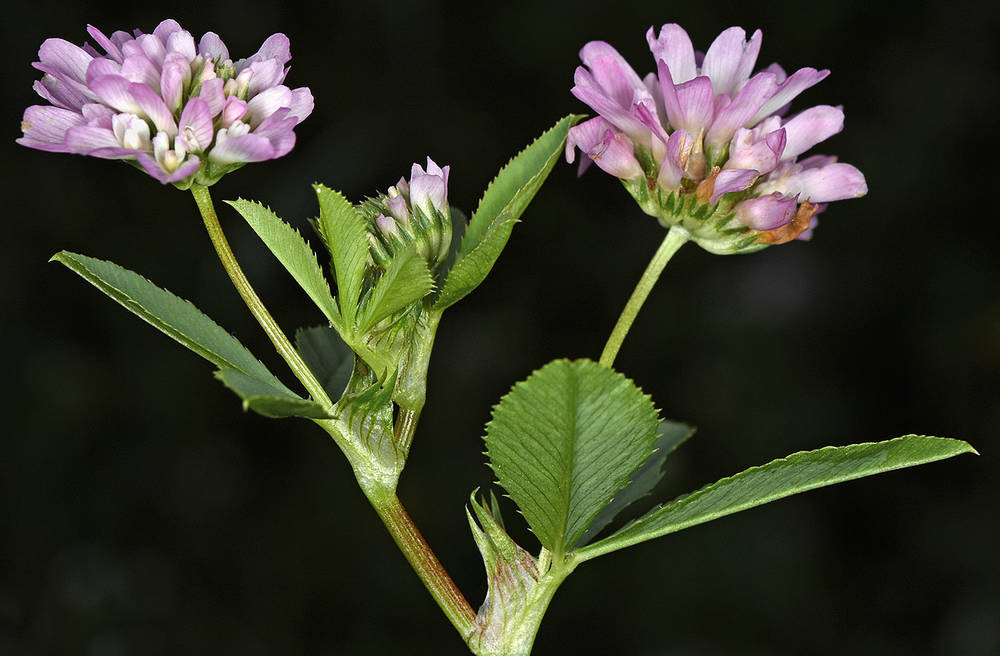
Plants annual, ascending, erect, prostrate, or procumbent, 20–60 cm, glabrous or glabrescent; branched.
Leaves pinnate; leaflets 3, obovate, ovate, elliptic, or rhombic, 10–30 × 5–30 mm, bases cuneate, margins spinulose-dentate, veins moderately prominent, tips rounded or broadly acute, surfaces abaxially hairy, adaxially glabrous; petioles 5–200 mm; petiolules ? 1 mm; stipules lanceolate or ovate, 5–18 mm, margins entire, tips acuminate-filiform.
Inflorescences axillary, 15–30-flowered, subglobose becoming globose, forming stellate-spreading clusters of calyces in fruit, 5–16 × 8–15 mm; inconspicuously involucrate by a narrow rim, rim ~0.2 mm; bracteoles minute or absent.
Peduncles 10–60 mm.
Pedicels slightly reflexed, ? 0.5 mm.
Flowers resupinate, 5–6 mm; calyces tubular-campanulate, inflated in fruit, markedly asymmetric-bilabiate, slit between adaxial lobes, 2.5–3 mm, becoming 8–11 mm in fruit, hairy, short-hairy, or glabrescent in fruit, veins 10, connected by lateral veins, tubes 2 mm, becoming 7–9 mm in fruit, lobes erect, triangular, becoming divergent and linear-lanceolate, unequal, green, orifices open; corollas 5–8 mm, pink to purple, banners oblong, 5–8 × 2 mm, tips emarginate to crenulate.
Fruits lenticular, 1.8–2.2 mm, < calyces.
Seeds 1, ovoid, 1.5–1.9 mm, dark purple, olive-green, yellow, or reddish brown, smooth, dull.
2n=14, 16, 32.
Wet meadows, lawns, roadsides, fields, waste places. Flowering Jun–Jul. 50–200 m. WV. CA, WA; eastern and midwestern North America; worldwide. Exotic.
Trifolium resupinatum is native to Eurasia and northern Africa and has become weedy throughout the world. Widespread use of T. resupinatum as a forage crop in the United States began in the late 1920s.